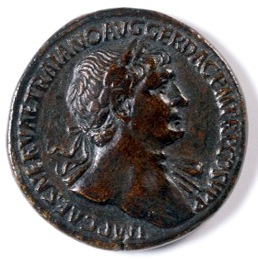Percentage of copper in brass
 Background information
Background information

Brass objects have been found dating back as far as 5000 BCE. Brass has many different uses, for example, musical instruments, utility objects such as door handles, coinage and as a decorative substitute for gold. Brass is an alloy of copper and zinc, however the exact composition can vary. Most types of brass contain about 60-70% copper and consequently 30-40% zinc but they may also contain small amounts of other elements such as lead and tin. Interestingly, one of the reasons why brass is used for door handles (in hospitals for example) is that the copper contained in it acts as a germicide and kills bacteria. There are several ways in which the copper content of brass can be analysed quantitatively in a school laboratory. Two good ways which work are by redox titration or by using a visible spectrometer (or colorimeter). This can provide the basis for a good extended essay as the merits of two or more different methods can be evaluated and discussed and applied to solve problems such as how the amount of copper in coins has changed over time.
Teacher’s notes
This experiment analyses the copper content of a sample of brass using the titration method and involves several redox reactions. It is a good experiment to combine quantitative chemistry with redox chemistry. I usually use brass screws or rivets but coins can be good to use too although be warned that it can be difficult to find the literature value for the exact percentage of copper in the particular sample of brass you have given to your students. The experiment does not use large quantities but make sure they take the proper precautions when using concentrated nitric(V) acid, HNO3. Be sure too that the concentrated nitric acid is added to the brass sample in the fume cupboard as noxious fumes of nitrogen dioxide, NO2, are evolved.
 Student worksheet
Student worksheet
TO DETERMINE THE PERCENTAGE OF COPPER IN BRASS
The titration of iodine with thiosulfate ions provides a good method to determine the concentration of solutions of oxidizing agents. A known amount of the oxidizing agent is first added to an excess of an acidified solution of potassium iodide to liberate iodine. The freed iodine is then titrated against a standard solution of sodium thiosulfate. The relevant half-equations are:
2S2O32−(aq) → S4O62−aq) + 2e−
and I2 (aq) + 2e− → 2I−(aq)
As the thiosulfate reacts, the yellow colour of the iodine changes to a clear solution of iodide ions at the end point. However it is difficult to see the precise point so starch is added as an indicator. The starch, which forms a deep blue coloured complex with iodine, should not be added until the solution is pale yellow, otherwise the iodine becomes strongly adsorbed on to the starch and the titration is less accurate.
In this experiment a weighed sample of brass is dissolved in concentrated nitric acid to give a solution of copper(II) ions. Potassium iodide solution is then added and the copper(II) ions react to give a white precipitate of copper(I) iodide and liberate iodine which is then titrated against thiosulfate solution.
2Cu2+(aq) + 4I−(aq) → 2CuI(s) + I2 (aq)
ENVIRONMENTAL CARE:
Because potentially harmful copper ions (and other heavy metal ions) are involved, the experiment has been scaled down from normal. Transfer all residues containing material from the brass to the container marked 'Heavy Metal Waste'.
SAFETY:
Safety glasses must be worn when using concentrated nitric acid. The nitric acid must be added to the brass in the fume cupboard as poisonous nitrogen dioxide gas is evolved.
PROCEDURE:
Weigh accurately about 1.0 gram of brass and dissolve it in the minimum quantity of concentrated nitric acid in a 100 cm3 beaker. Transfer the solution, with washings, to a 100 cm3 volumetric flask, add distilled water up to the mark and mix well. Pipette 10 cm3 of the brass solution into a conical flask and add sodium carbonate solution until a slight permanent precipitate is obtained. This neutralises excess nitric acid in the solution. Dissolve the precipitate in the minimum volume of dilute ethanoic acid and then add about 5 cm3 of approximately 1.0 mol dm-3 potassium iodide solution. Titrate this solution against standard 0.100 mol dm-3 sodium thiosulfate solution. Repeat the experiment to obtain consistent results.
QUESTIONS:
1. Give the equations for:
i. the reaction of the copper in the brass with concentrated nitric acid.
ii. the neutralisation of excess nitric acid with sodium carbonate
iii. the overall reaction between iodine and thiosulfate ions
2. Why is it necessary to neutralise the excess nitric acid and then re-acidify with ethanoic acid?
3. Compare the result you obtain with the composition of brass from the literature.
4. Discuss the assumptions you have made in arriving at your result.
5. Suggest other methods that could be used in a school laboratory to determine the concentration of copper(II) ions in solution.
This worksheet can also be downloaded from:

 IB Docs (2) Team
IB Docs (2) Team